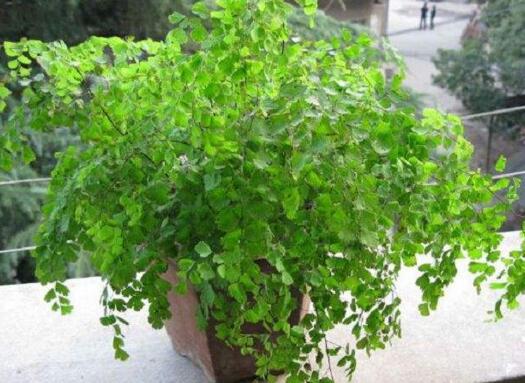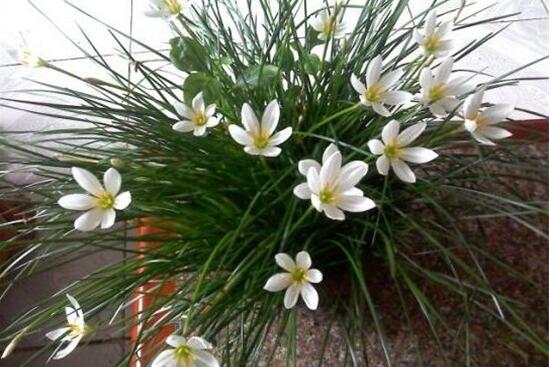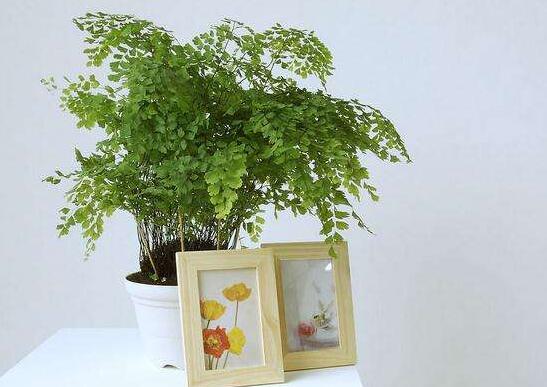How to raise Dryopteris, how to cultivate Dryopteris and matters needing attention / avoid drying and strong light
Dryopteris can not only observe the leaves, but also raise harmful substances such as formaldehyde and nicotine at home, and the methods of maintenance and management are relatively simple, so more and more people are going to raise a few pots at home, so is it easy to keep them at home? How to raise Dryopteris? Today we will learn about the breeding methods and points for attention of Dryopteris Dryopteris.
Is Dryopteris easy to raise?

Dryopteris Dryopteris is one of the plants that are easy to raise. It has general requirements for soil, temperature, water and fertilizer, but higher requirements for light and humidity to ensure that its environment is not too dry and the light is not particularly strong, and then use suitable soil. And reasonable watering, fertilization can raise very well.
How to raise Dryopteris
In the growing environment, Dryopteris prefers fertile, loose and permeable soil; in light, it likes places where the light is bright but not too strong; in water, it likes a moist environment; in temperature, its leaves need more than 5 degrees to be green, so we should try to create such an environment for it during conservation.
Culture methods and matters needing attention of Dryopteris Dryopteris
What kind of soil does Dryopteris use?
In the choice of soil, the lowest requirement is good drainage and loose, and there are two most suitable soils, the first is to use garden soil, rotten leaf soil and fine sand, the proportion is 40%, 50%, 10%; the second is to use peat soil, rotten leaf soil, fine sand mixture, the proportion is 40%, 40%, 20%.
Note: no matter which kind of soil is used, you must pay attention to disinfection before planting. The easiest way is to dry in the sun for 1-2 days, and if possible, you can use carbendazim or potassium permanganate solution to achieve disinfection.
Second, lighting requirements
Dryopteris likes a bright environment with no lack of light, and it is afraid of direct sunlight, so it is best to keep it in the east or north windowsill when raised at home, so as to prevent it from being exposed to the sun. If you are kept in the hospital, you should block out more than 50% of the sun in summer.
Note: when the light is too strong, the leaves of Dryopteris may become zoom and dry, so we must not raise it in full light, but in the breeding methods and precautions of Dryopteris, we should also pay attention to the lack of light, if the light is too dark will make the leaves thinner, thin, unable to play the efficacy of Dryopteris and the role of ornamental value.
3. Suitable temperature
The most suitable temperature for Dryopteris is 10-20 degrees, but as long as the temperature is above 5 degrees, its leaves can remain green, but often below 5 degrees may be frostbitten, so keep warm in winter. In summer, you need to spray more water to lower the temperature.
Note: in autumn or winter, the temperature difference between day and night is large, at this time how to raise Dryopteris? It is suggested that flower friends move it indoors, which can not only control the temperature within a suitable range, but also reduce the excessive temperature difference and lead to the yellowing of fern leaves.
Fourth, watering method
When watering, you should try to keep the soil moist, because Dryopteris is a plant that likes a humid environment, so it can be watered once a day or two during the growing period. If it is a hot summer, it can be watered once in the morning and evening, not too much each time.
Note: if often not watered, the edges of the leaves will dry up and curl, so watering should be avoided. Although there are many times of watering, there must be no stagnant water in the soil. Try to water it by sprinkler irrigation.
5. Fertilization skills
The demand for fern on fertilizer is not high, as long as it can be applied with thin fertilizer and water once a month, because Dryopteris is an indicator of calcareous soil, so less calcium fertilizer can be applied when fertilizing, which can make the fern grow better.
Note: when the summer temperature is relatively high, you need to stop fertilization and wait until the temperature is cool before applying organic fertilizer. In winter, there is no need to apply fertilizer, especially when the temperature drops below 5 degrees, and fertilizer should not be sprinkled on the leaves.
How to raise Dryopteris Dryopteris, the culture methods and matters needing attention
Dryopteris habits, like fertile, permeable calcareous sandy loam, family pot can be made from a mixture of loam, rotten leaf soil and river sand. Dryopteris is native to the flowing stream or dripping rock wall at an altitude of 100,2800 meters above sea level, and is an indicator of calcareous soil. The suitable growth temperature of Dryopteris Dryopteris is 2125 ℃ in daytime and 1215 ℃ at night. As long as the temperature is above 5 ℃, the leaves will remain fresh green, but the leaves below 5 ℃ will be frostbitten. Dryopteris likes to scatter light and is afraid of direct sunlight. It should be placed in a brightly lit place indoors so that it can grow normally even if it is placed for 1 year.
How to cultivate Dryopteris Dryopteris in hydroponics (basic method)
Environment: the environment suitable for the survival of Dryopteris should be dark and humid, this plant can not stand cold and drought, and prefer to live in acidic soil, but it can also be placed in a place with sunlight scattering for a short time. This will make it grow better.
Soil: in terms of soil, the best combination is the semi-mixed culture soil of mountain forest soil and pastoral soil.
Watering: Dryopteris likes high humidity very much, so it should be watered 4-5 times a day in spring, summer and autumn, but it can be reduced to 1-2 times in winter, but it still needs frequent spraying to prevent the leaves from being too dry. Watering must be adequate during the growing season.
Fertilization: fertilization is necessary for Dryopteris. On average, thin fertilizer needs to be applied every 2 weeks or so in order to promote its growth. However, to grasp the principle of "giving more with a small amount", you can use 1000-2000 times dilute solution such as flower clover.
Temperature: generally speaking, when the leaf is more than 5 ℃, the leaf will not be scorched yellow, but it should not exceed 30 ℃. During hydroponic culture, the water temperature should be controlled in addition to the temperature in the room, which should be equal to the room temperature.
Lighting: be sure to shade and avoid direct sunlight. The stronger the light, the better. Toilet and indoor display can not be more than 3 days, and then move to the windowsill for 3 days, pay attention to spray water, can ensure that the plant grows well.
Humidity: the climate in summer is often too muggy, and the room is not well ventilated. At this time, we should improve the indoor air humidity and pay attention to strengthening ventilation.
Pruning: when the foliage is too dense, the old leaves can be properly trimmed with scissors, otherwise, the leaves will easily turn yellow, thus hindering viewing.
Water culture of Dryopteris przewalskii
First of all, wash the roots of Dryopteris cultivated in soil and disinfect them with potassium permanganate. Then find a container to add water, match it with a proper proportion of nutrient solution (which can be bought on the market) or fix it on the mouth of the container or on the surface of the water. The fern should be planted on the coral stone and put the coral stone directly in the water, which will grow well after survival.
Dryopteris hydroponics precautions: coral stone can be bought in a rockery shop in the flower-and-bird market. There are many styles that you can choose. The coral stone should be desalted by soaking before use. In order to let the stone grow moss, can not be kept indoors for a long time, properly accept the sun. When hydroponic culture, the water should not drown the head of Dryopteris. Water is replenished in time during maintenance, and the water can be changed at 5: 10.
Matters needing attention in culturing Dryopteris:
1. Dryopteris prefers warm, humid and semi-cool environments and hates direct sunlight, so it is best to put the plant indoors where the sun is out of reach. After all, too much light can easily cause scorching on the edge of the leaves.
2. Ferns grow in a humid environment, and Dryopteris Dryopteris is no exception. During cultivation, in addition to keeping the soil moist, water mist is often sprayed on the leaves to improve the humidity in the air. When the plant is yellowing, it is often caused by insufficient humidity. Of course, this may also be caused by frost injury.
3. The pot needs to be changed once every spring, and the dried leaves and old roots should be trimmed at the same time. The basin soil should also be replaced with fresh, fertile and loose rotten leaf soil, and it is best to add a small amount of brick dust inside.
Maintenance of Dryopteris przewalskii in four seasons
Maintenance of Dryopteris in spring
Dryopteris can be changed every April. Dryopteris likes a damp environment and is afraid of strong light. It can be illuminated sooner or later in early spring and placed in a room with bright scattered light. Spring is the growing period of Dryopteris, pay attention to water and fertilizer management. Especially in indoor maintenance, attention should be paid to increasing indoor air humidity, which is the key to family breeding of Dryopteris Dryopteris. In addition, ferrous sulfate solution can be irrigated once a month to increase the acidity of the soil, which is not only conducive to growth, but also make its leaves green.
Maintenance of Dryopteris in summer
Dryopteris grows normally in summer, but the high temperature, hot and dry environment is not conducive to the growth of Dryopteris. Should put the iron line fern in the bright light indoor maintenance, keep the basin soil moist, water each time in the morning and evening, often spray around, improve the air humidity. Do not water and fertilize when the weather is too hot. Fertilization is usually carried out in the evening and watered the next morning after fertilization. This is more conducive to the play of fertilizer effect. The iron fern is afraid of the wind and should not be placed in front of the electric fan and the air outlet of the air conditioner. The air humidity of the air conditioned room is lower, so the number of sprays should be increased.
Autumn maintenance of Dryopteris przewalskii
Dryopteris grows normally in autumn, so pay attention to the management of water and fertilizer. After the temperature drops at the end of autumn, we should pay attention to maintain the indoor temperature, gradually reduce the amount of water, make the basin soil moist, and gradually move it to a place with morning and evening light for cultivation. Don't fertilize when the temperature drops.
Maintenance of Dryopteris in winter
Dryopteris is not resistant to cold and should be kept above 5 ℃ at room temperature. The growth of Dryopteris less than 5 ℃ is stagnant and the leaves are dark green, which can appropriately increase the light intensity and time in the morning and evening (avoid noon light), reduce watering, keep the basin soil dry and do not apply fertilizer.
If the indoor temperature is on the high side in winter, the air humidity will be lower, pay attention to replenish the air humidity.
How to raise potted Dryopteris? Culture methods and matters needing attention of Pteridopteris in potted cultivation
The leaves of Dryopteris Dryopteris are green, small and dense, overlapping, and have high ornamental value. At the same time, Dryopteris fern has strong adaptability and easy cultivation, so it is very suitable for indoor planting, which can not only green the environment, but also purify the air. So, how to grow Dryopteris in pots? The breeding methods and matters needing attention of potted Dryopteris are introduced as follows.
Picture: Dryopteris Dryopteris
1. Culture methods of potted Dryopteris Dryopteris
1. Soil: Dryopteris prefers loose, permeable and fertile calcareous sandy loam. when potted, the cultivated soil can be mixed with loam, rotten leaf soil and river sand.
two。 Watering: clematis like the humid environment, the growing season should be fully watered, in addition to keeping the basin soil moist, but also pay attention to high air humidity, when the air is dry, sprinkle water around the plant. Especially in summer, water should be irrigated once or twice a day. If there is a lack of water, it will cause the leaves to shrink. Watering taboo basin soil when dry and sometimes wet, easy to make the leaves yellow.
3. Sunlight: clematis like bright scattered light and are afraid of direct sunlight. If the light is too strong, the leaves will be withered and yellow or even die, which can be properly shaded in summer, and most of the leaves will be withered and yellow if the strong light is directed for a long time. It should be placed in a dark place indoors, and it can grow normally even if it is placed for 1 year.
Picture: Dryopteris Dryopteris
4. Temperature: Dryopteris likes to be warm and hardy, and the suitable temperature for growth is 21: 25 ℃ in daytime and 12: 15 ℃ at night. In winter, the leaves can keep fresh green when the temperature is above 5 ℃, but frost injury will occur when the temperature is lower than 5 ℃.
5. Fertilization: rarefied liquid fertilizer is applied 2 or 3 times a month, do not stain the leaves, so as not to cause rotten leaves. Because of the calcium-loving habits of Dryopteris, appropriate amount of lime and broken eggshell should be added in the basin soil, and the effect of calcareous fertilizer will be better. In winter, we should reduce watering and stop fertilizing.
6. Insect pests: leaf blight often occurs in potted ferns. Bordeaux solution can be used to control it at the initial stage, and 70% methyl topiramate 1000-1500 times solution can be used to control severe cases. If the plant is damaged by scale insects, 40% omethoate 1000 times solution can be used for control.
7. Pruning: the fern grows slowly as the temperature drops in autumn, and the old leaves will gradually turn yellow, so cut them off.
Picture: Dryopteris Dryopteris
2. matters needing attention in potted culture of Dryopteris
Dryopteris should be planted or changed in spring. When changing the basin, be careful not to hurt the root system, avoid the wind blowing, and replace half of the new soil. Keep the basin soil moist and appropriate air humidity after changing the basin. Due to the rapid growth of the leaves of Dryopteris Dryopteris, some of the old leaves are often cut off during the growing season. When the leaves are too dense, Dryopteris not only loses its elegant form, but also its new leaves will die due to lack of light, which is easy to form hollow phenomenon and need to be pruned in time. When withered leaves are found in the process of maintenance, Dryopteris should be cut off in time to keep the plant fresh and beautiful and conducive to the germination of new leaves.
[conclusion] Dryopteris has fine leaves and has a good effect on absorbing harmful substances in the air, so it can be called a "plant purifier". The above introduces the cultivation methods and matters needing attention of potted ferns, hoping to help you!
- Prev

How to raise leek lotus, the breeding methods and precautions / light should be sufficient.
Leek lotus, also known as wind and rain flowers, it is a very beautiful plant, its leaves green, accompanied by pink flowers, dazzling, beautiful and elegant, people like. In life, many people want to raise leek lotus, then how to raise leek lotus? The following are the breeding methods and matters needing attention of leek lotus carefully arranged by the editor.
- Next

How to water Dryopteris Dryopteris, watering method / watering time / water quality selection
Although the plant of Dryopteris is small, its growth rate is very fast, and it has a greater demand for water during the growing period, because it likes a humid environment, so we must pay attention to reasonable watering in daily management.
Related
- Fuxing push coffee new agricultural production and marketing class: lack of small-scale processing plants
- Jujube rice field leisure farm deep ploughing Yilan for five years to create a space for organic food and play
- Nongyu Farm-A trial of organic papaya for brave women with advanced technology
- Four points for attention in the prevention and control of diseases and insect pests of edible fungi
- How to add nutrient solution to Edible Fungi
- Is there any good way to control edible fungus mites?
- Open Inoculation Technology of Edible Fungi
- Is there any clever way to use fertilizer for edible fungus in winter?
- What agents are used to kill the pathogens of edible fungi in the mushroom shed?
- Rapid drying of Edible Fungi

